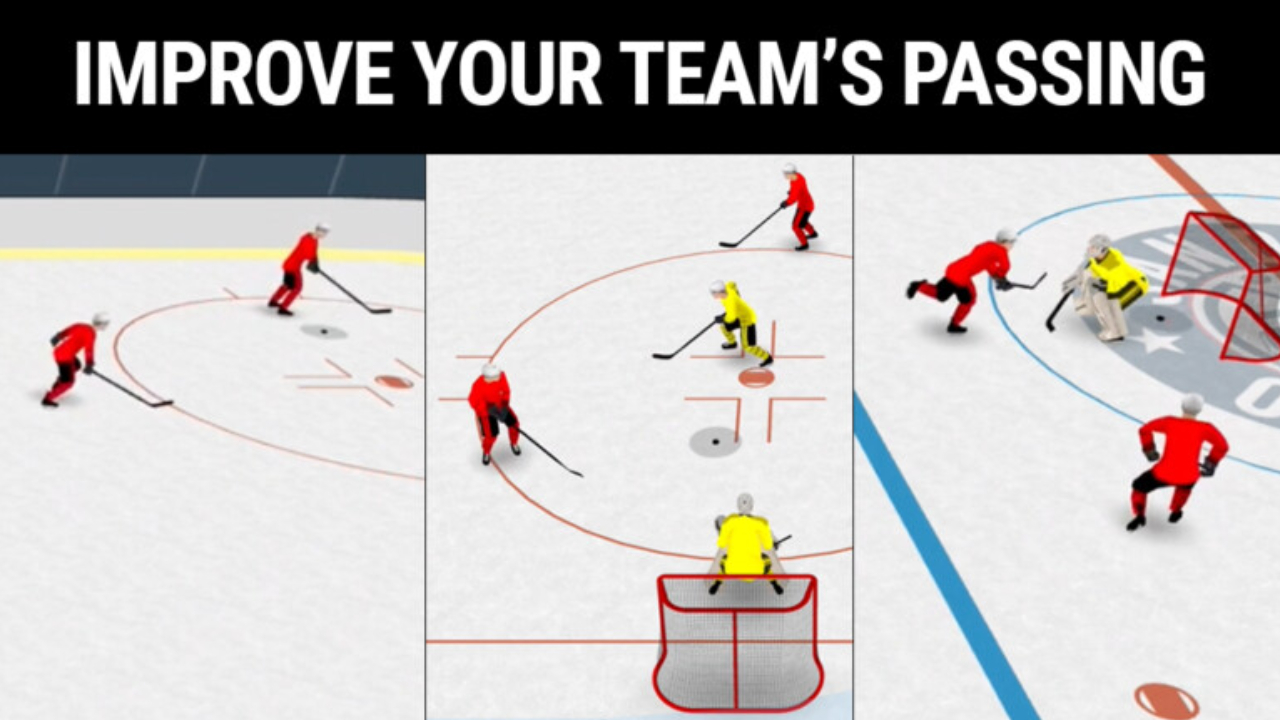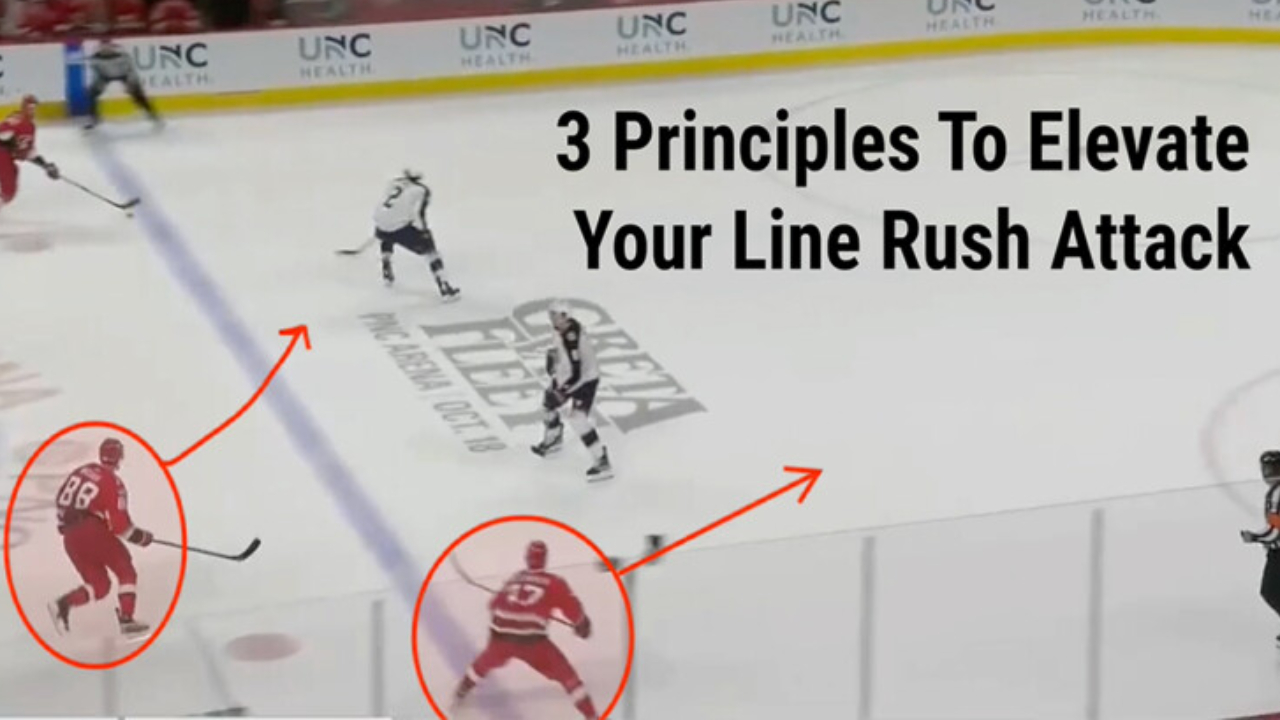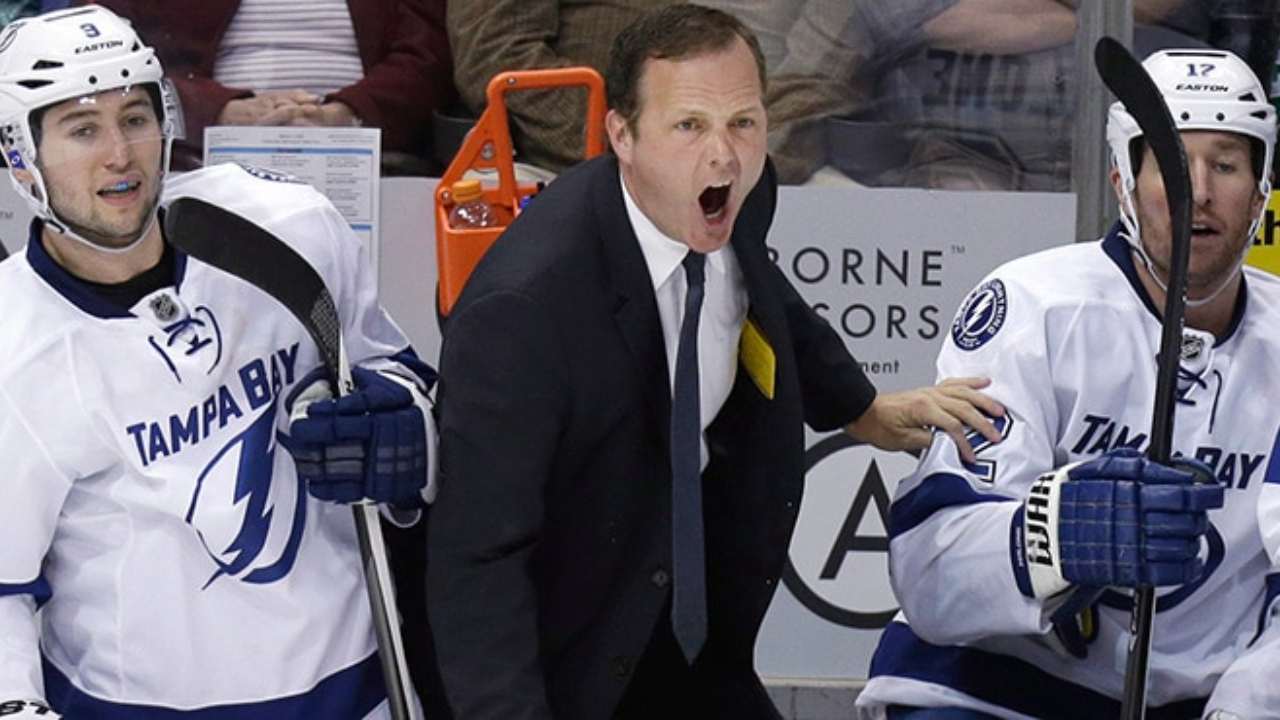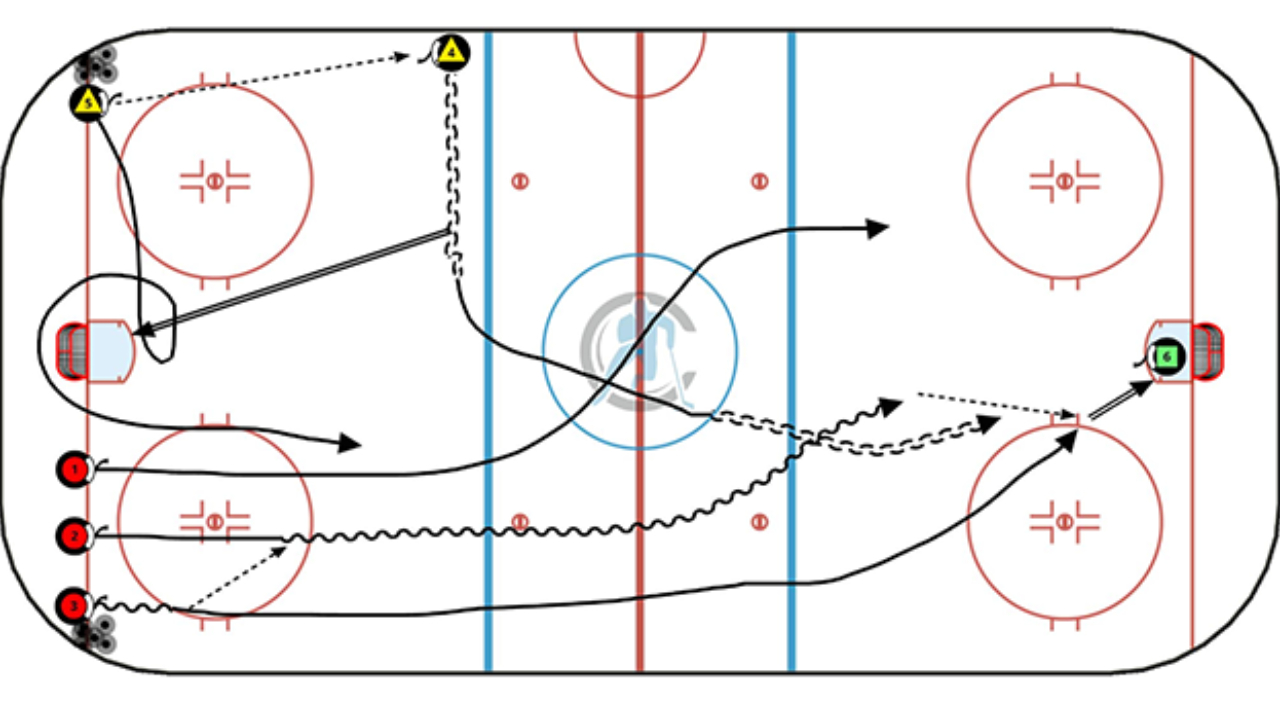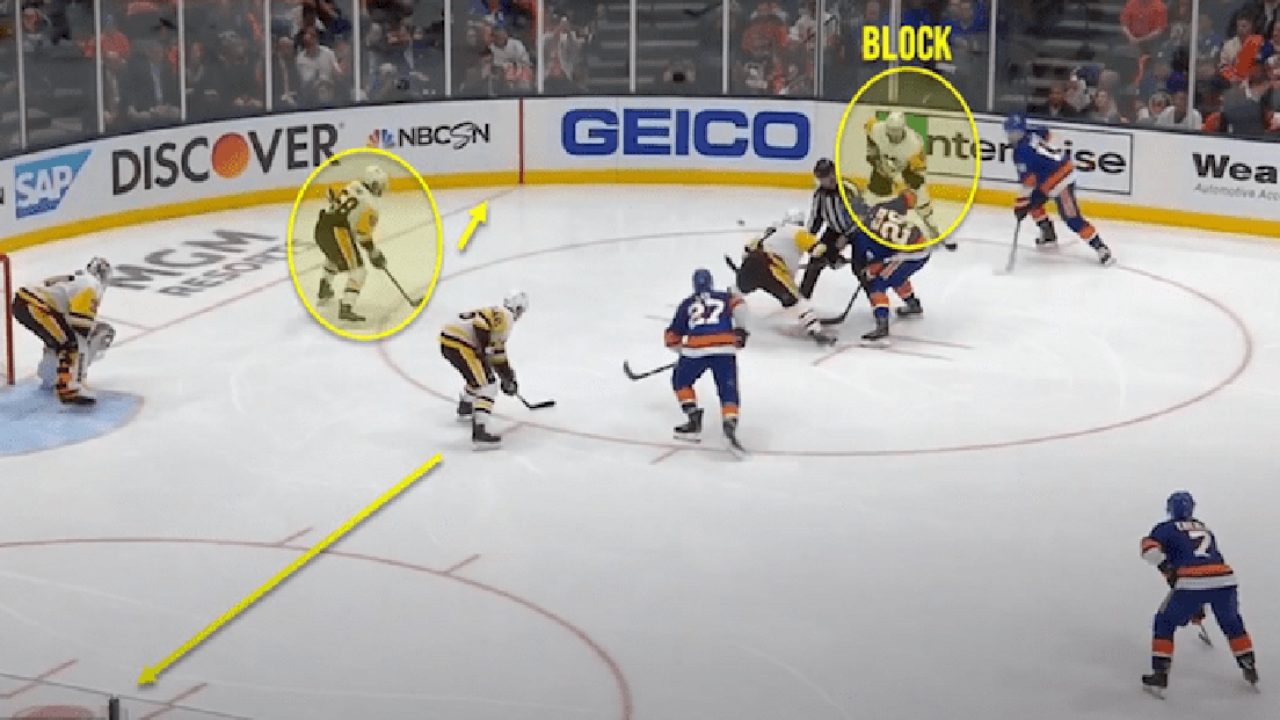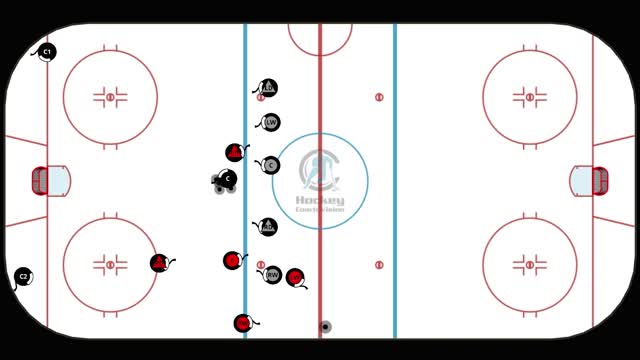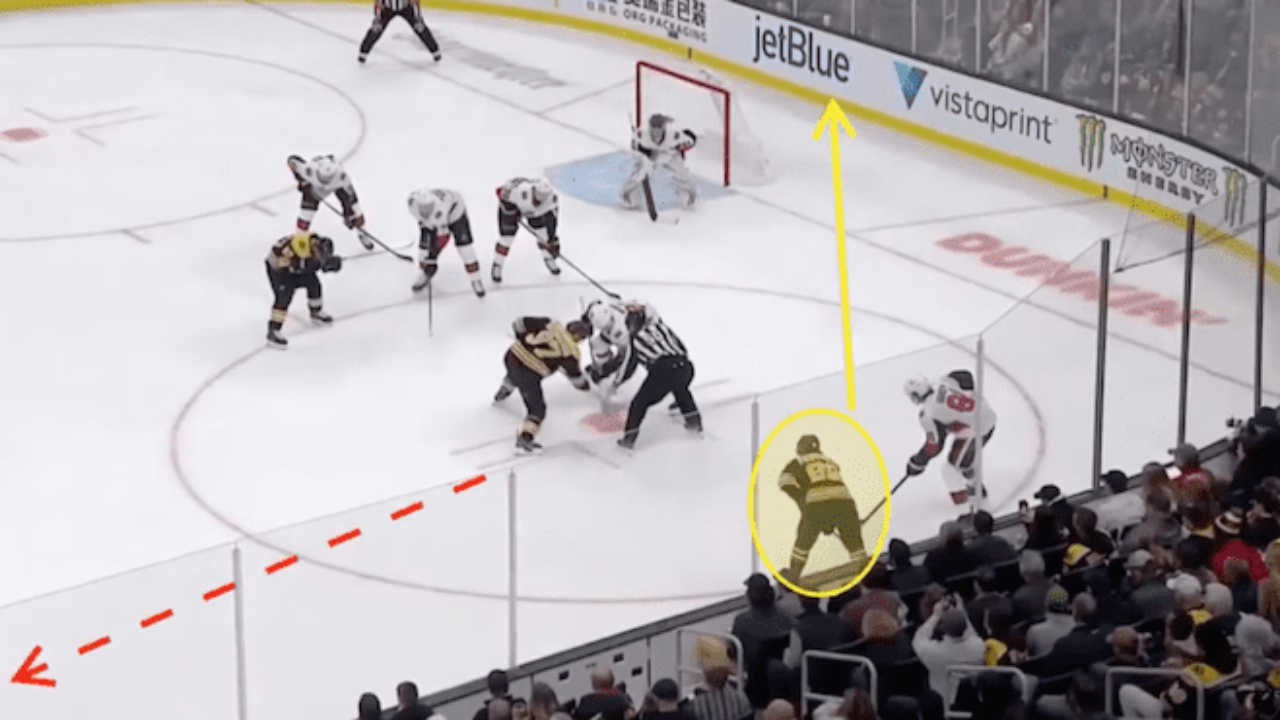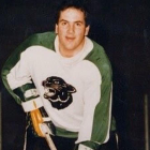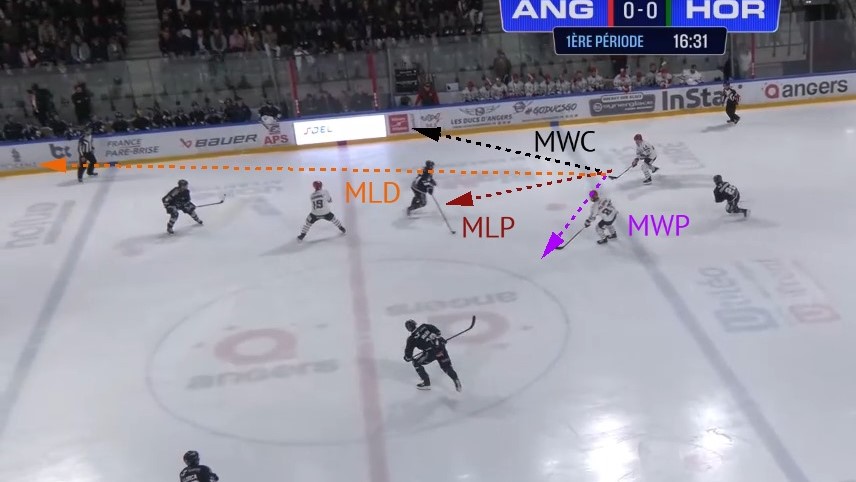
Coaches, We’ve All Been There
You’re on the bench, watching a line that’s been stuck in the defensive zone far too long. They’re tired, both mentally and physically. And with every second that passes, the mistakes multiply. You can see it happening! Players start abandoning their responsibilities, desperately trying to get the puck out so they can change.
But instead of escaping, it turns into quicksand. Everyone starts chasing the play, reacting instead of anticipating, active instead of proactive.
The most common breakdowns in the defensive zone occur in what I call the confusion areas: behind the net and along the half-wall.
The second a winger commits to pressuring an opposing player who already has full possession of the puck on the half wall, a dangerous pocket of ice can open up. Making players “chase” the offensive team.
Understanding D Zone Chasing
Dzone Chasing happens when players deviate from their assigned roles in the defensive zone, often due to pressure, fatigue, or lack of discipline. This leads to disorganization and reactive play, where players focus on pursuing the puck rather than maintaining structure. Forwards, especially wingers, may abandon their positions to challenge puck carriers, unintentionally leaving key areas vulnerable. These mistakes typically arise in high-pressure situations, particularly around the half wall or behind the net, where quick decisions are necessary. Understanding the root causes of this behavior can help players stay disciplined and reduce the likelihood of creating opportunities for the opposing team.
Common Mistakes in Defensive Zone
The defensive zone often becomes chaotic in high-pressure situations, particularly around the half wall and behind the net. These areas are where players frequently lose focus and abandon their roles. For instance, when a strong side winger overcommits to challenge a puck carrier on the half wall, they expose their defenseman by leaving the shooting lane. This breakdown in structure can create open lanes or scoring chances for the opposing team. Miscommunication or hesitation in these confusion areas compounds the issue, as players struggle to recover their positions, increasing the likelihood of costly errors that disrupt the defensive effort.
Role of the Strong Side Winger
The strong side winger must stay disciplined and build a wall around the face-off dot when the other team has possession of the puck on the half wall. Focusing on those simulated practices in those common confusion areas like the half wall and behind the net, can help players remain disciplined. Small-area games, such as The Wing Quadrant, encourage quick decision-making and reinforce accountability for defensive roles. Encourage players to communicate during drills to build habits that translate into game situations, enhancing their ability to stay organized in high-pressure defensive moments.
The Wing Quadran Drill;
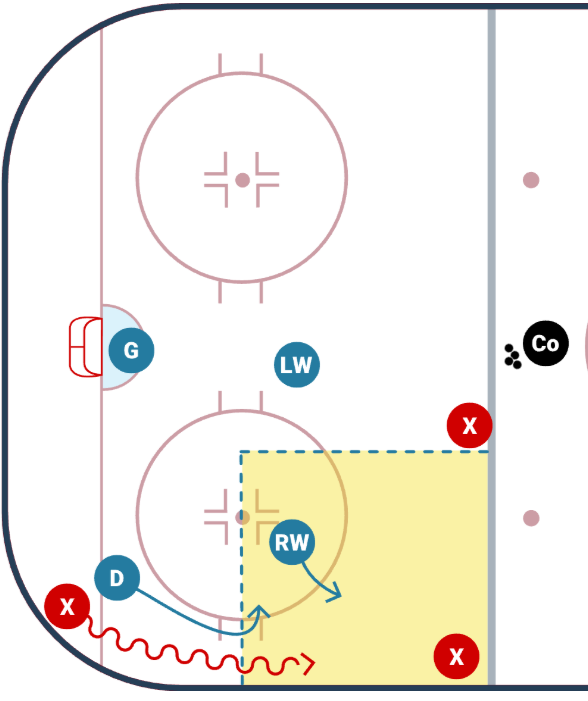
This drill is essentially a 3 vs 3, but the main focus is d-zone coverage and that the winger does not let the puck carrier skate through their "quadrant" of the zone.
- Setup a 3 on 3 in one side of the zone (as pictured in the diagram).
- On the whistle, an offensive puck carrier starts in the corner with a defenseman.
- The puck carrier is working to carry the puck through the quadrant, or pass the puck to one of their point players before they attack the net.
- The winger (shown as RW in the diagram) works to not let the puck carrier skate the puck through the quadrant and to kill the play before they are able to attack the net.
- Coaches can blow down the drill after a goal, the defensive team gets the puck out of the zone, or when there is a coaching opportunity.
- Get reps on both sides of the ice.
Key points
- Winger:
-
- Do not let the puck carrier enter the side door of the house.
- Keep your stick on the ice to block passing lanes and build a wall.
- If the puck is passed to one of the point players, work quickly to get out and block their passing & shooting lanes.
- If puck goes outside of your area, communicate with your defenseman and other winger to take coverage.
- Offensive Team:
-
- Support each other and work to be outlets for the puck carrier.
- Point players - if you get the puck, move the puck quickly or work on fakes to open up passing & shooting lanes.

